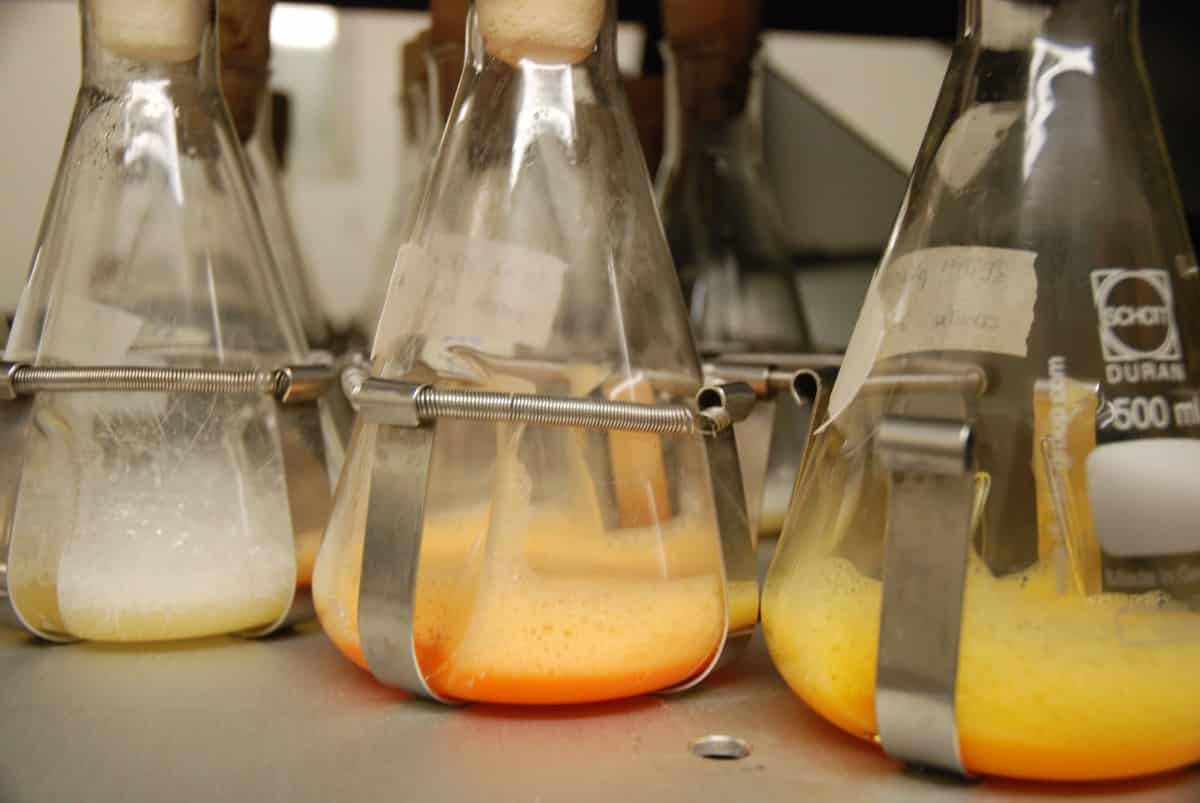
Astaxanthin is the first product with which Bicomer, a start-up company based in Bielefeld, Germany, hopes to make the animal feed and cosmetics industries more sustainable by using biotechnology. The high-quality carotenoid is not just renowned for its red colour. It is above all a vitamin-like ingredient that is frequently used in fish and poultry fodder. Even triathletes swear by its effectiveness as a dietary supplement. It is also used as an antioxidant and UV absorber in the cosmetics industry.
This is reason enough for the scientists at the University of Bielefeld to invest their biotechnological expertise into the manufacture of naturally-produced astaxanthin. This can be done via the fermentation of the corynebacterium glutamicum bacterium. In this way, energy consumption and the production of toxic by-products are reduced. Furthermore, petroleum-based products can be avoided as a result. An important step towards making our world a little better.
Founder Dr. Nadja Alina Henke in conversation with the innovation Origins

How did you come up with the idea for the launch of your start-up?
I was researching the metabolic pathway of carotenoids (pigments) and saw from the results of my doctoral thesis that the potential for further research arose . At the same time, it was obvious that my findings in the field of carotenoid production could be of benefit to industry. So it was clear – especially with the astaxanthin product that I had developed through fermentation – that a business model could emerge from this. This is because astaxanthin is usually produced based on petroleum, which is a critical issue today because it is not sustainable.
Where do you envisage the specialized applications?
Astaxanthin is particularly suitable for use in fish and poultry feeds due to its coloring properties. This dye is responsible for the color of salmon and egg yolk. Even extreme athletes like to use the active ingredient, for instance as a defense for their immune system and for regeneration after training. In the cosmetics industry, astaxanthin is used as an antioxidant in anti-aging products and in sun creams as a protection against.
What makes the product more special than other products?
Our product is extracted naturally through a biotechnological process. This means that the advantage that this product resulting from fermentation has, is that there is no longer need for petroleum-based manufacture. The process I have developed is especially sustainable. It not only saves time, but is also particularly environmentally friendly. In our process, we can use sustainable substrates or waste materials from the agricultural industry in order to produce high-quality astaxanthin.
By the way, the manufacturing processes necessary for production are already established on an industrial scale in a similar form, for example in the million ton scale production of the amino acid lysine. This will enable us to carry out our subsequent R&D on a very large scale.
What was the biggest hurdle you had to overcome initially?
Securing the funding for my project. I was also working on other scientific publications and a grant application for the start-up at the same time as writing my doctoral thesis. That was pretty tough, but it paid off.
Was there ever a moment when you wanted to give up?
No, I never wanted to give up. I enjoy my work and as I come from a scientific background, I know that every project has its ups and downs. Consequently, I was always confident that good times would come after every setback.
What was the greatest moment for you when it came to founding the company, what made you particularly proud?
Whenever I made progress, when I saw that my ideas were becoming more and more of a reality, it made me very proud. Yet at times the conversations with team colleagues are and have also been very motivating. It is simply an indescribable experience to see everyone pull together and get all fired up for the start-up.
What can we look forward to in the next few years, in other words: What can we expect from you in the coming years?
Our team is set to double again in the future, so we will be able to offer other interesting products for the cosmetics industry in addition to a tried-and-tested process for producing astaxanthin. I am always looking for new challenges in order to translate biotechnological expertise into products. We will use this success to further expand and put some exciting research into practice. We are planning to make many more results that arise from biotechnology available for practical applications.
What drives you every morning?
What drives me is that I get to work on an exciting project with a good team. I see the start-up as an opportunity because I am always learning new things and am able to surpass myself.
“If your own idea comes to fruition and inspires others, that’s the greatest kind of success for me.”
What is your vision: Where do you see your company in 5 years time and what is your ultimate goal?
Hopefully in 5 years time we will be a recognized producer of natural astaxanthin. My ultimate goal is to keep up with the development of the platform technology – the micro-organism we use – and put more and more products on the market.

